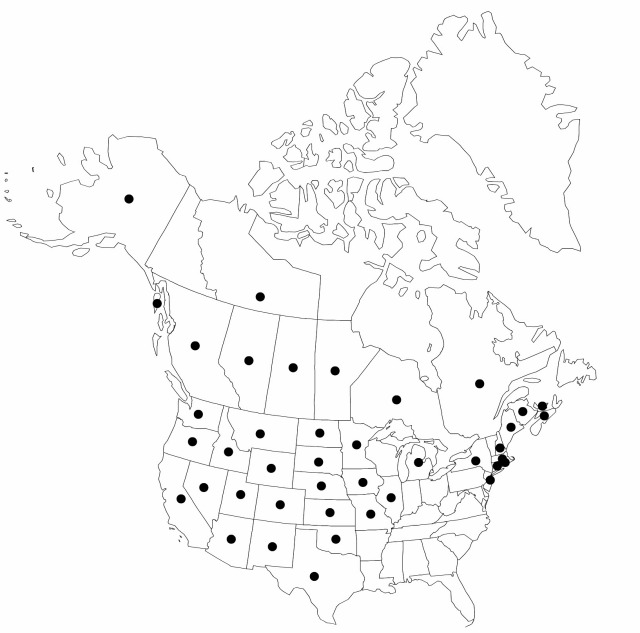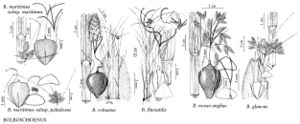Bolboschoenus maritimus subsp. paludosus
Acta Phytotax. Geobot. 31: 148. 1980.
Scales medium brown to nearly colorless, rarely dark-brown. Styles all 2-fid (rarely, some 3-fid). Achenes medium brown, sometimes darker or paler, biconvex.
Phenology: Fruiting spring–fall (south and lowland California), summer (north).
Habitat: Brackish to saline coastal and inland shores, marshes
Elevation: 0–2900 m
Distribution

Alta., B.C., Man., N.B., N.W.T., N.S., Ont., P.E.I., Que., Sask., Alaska, Ariz., Calif., Colo., Conn., Idaho, Ill., Iowa, Kans., Maine, Mass., Mich., Minn., Mo., Mont., Nebr., Nev., N.H., N.J., N.Mex., N.Y., N.Dak., Okla., Oreg., R.I., S.Dak., Tex., Utah, Wash., Wyo., Mexico, South America (Argentina), South America (Peru), Pacific Islands (Hawaii)
Discussion
Many bipistillate specimens from Eurasia and Africa are very similar to American plants. Further study may show that these plants should be included in Bolboschoenus maritimus subsp. paludosus.
Plants from seashores have bright brown floral scales and medium to dark brown achenes; plants from the western interior have bright brown to very pale floral scales and/or achenes.
Around Chicago, Illinois, Bolboschoenus maritimus subsp. paludosus is spreading with other halophytes in roadside ditches where salts accumulate; it is likely to occur elsewhere in similar conditions. Bolboschoenus maritimus subsp. paludosus is planted for waterfowl food (H. A. George 1963, as Scirpus robustus), and in California it is sometimes mixed with B. glaucus and hybrids. The tough inner vascular cores of the rhizomes are used by Native Americans of the Pacific Coast in making baskets.
Selected References
None.
Lower Taxa
"shortened" is not a number.
